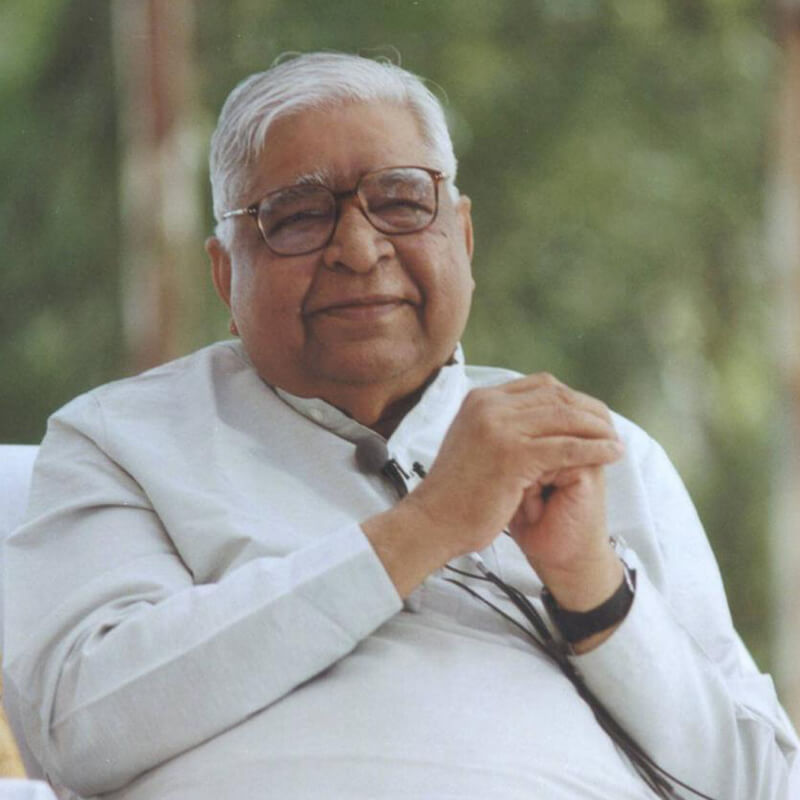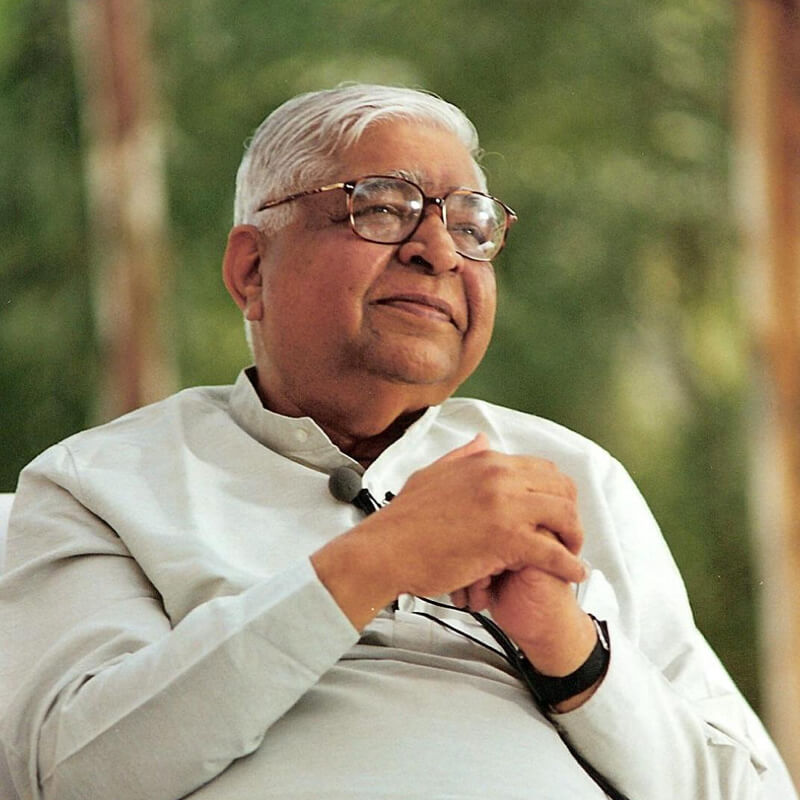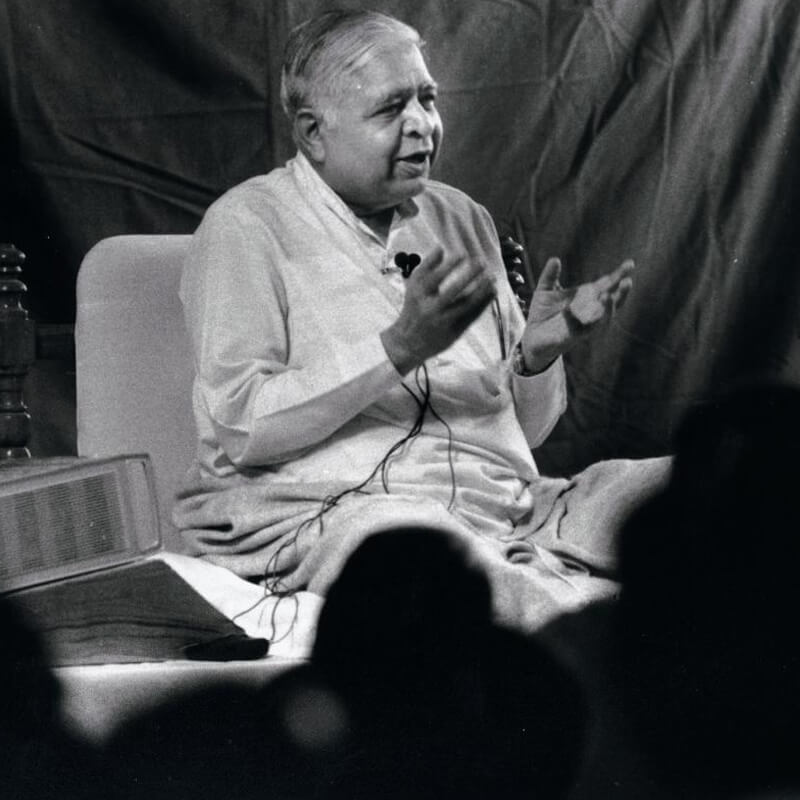The word ‘Dharma’ has been misused in India since the past 1,500 to 2,000 years because people started to use Dharma in the sense of a religion or sect.
However, Dharma is universal and eternal. Dharma is not Buddhist, Christian, Hindu, Jain, Jewish, Muslim, etc. These are all different religions or sects.
In ancient times, Dharma meant the universal laws of nature, which are applicable to everyone. Even today, we come across Dharma being used in this sense. For example, in Hindi we say that it is the Dharma of fire to burn and to cause to burn. Here, Dharma has nothing to do with any religion but means the nature of fire. How can fire be Buddhist, Christian, Hindu, Muslim, Parsi or Sikh? Fire is fire.
Likewise, ice is ice. The Dharma of ice is to be cold and to cause to cool. This is the nature of ice, which is universal and eternal.
Similarly, when a person develops negativity such as anger, aversion, jealousy, and animosity, he feels unpleasant sensations and becomes miserable.
Neither the mental negativity nor the resultant misery can be called as Christian, Hindu, Buddhist or Jain. This is the nature of mental defilements: to make one miserable.
When India became independent, the Indian government prepared its constitution, which stated that the constitution and government would be Dharma-nirpeksh, meaning non-Dharmic. This was a blunder. How can any government be non-Dharmic? It has to be Dharmic, meaning it will give importance to right conduct. Actually, the constitution should have stated that it is non-sectarian, not non-Dharmic. The English word ‘secular’ was wrongly translated as Dharma-nirpeksh.
Seth Govinddas was an eminent Hindi writer. I knew him well because he occasionally came to Myanmar. He played a major role in the Hindi translation of the constitution. So, I drew his attention to this blunder. He accepted the error and later corrected it. When I came to India, I came to know that the late Mr. Laxmimal Singhviji also objected to this mistake and made a request to correct it. Finally, ‘Dharma-nirpeksh’ was changed to ‘panth-nirpeksh’ (non-sectarian). However, even today, national leaders and others still use Dharma-nirpeksh.
Whenever a sectarian word is added to Dharma, it corrupts its meaning. The Buddha never added any sectarian adjective to Dhamma. The only adjective that he added was ‘truth’. Therefore, he used the term ‘saddhamma’ (true Dharma) for his teaching. When the teaching is based on saddhamma, it does not give rise to blind beliefs. The law of nature is the same for everybody. Therefore, the word saddhamma did not give rise to a sect because the entire teaching is based on truth.
This is why the Buddha is known as saccanāma, one whose name means truth. Nāma also means mind. Thus, saccanāma is a person whose mind is always immersed in truth. Later, saccanāma also came to be known as satanāma.
When Bhaktimarg (path of devotion) became predominant in India, some saints used the word satanāma as a synonym for God. For example:
Hota punīta japai satanāmā,āpu tarai tārai kula doī.
- Kabirdas
Kahai dariyā satanāma bhajana binu, roi roi janama gavaiho.
- Dariya sahab
Satanāma kī ratanā karikai, gagana-mandala caḍhi dekhu tamāsā.
- Jagjivan sahab
Sometimes, satanāma is found in its true meaning. For example, when Guru Nanakji said:
“Satināma karatā purukha” meaning one whose name personifies truth and who practices only truth, who has attained the state ofsatanāma through one’s own efforts. Having attained this state, he becomes free from all hatred and fear.
‘Akāla mūrati’ meaning eternal and imortal. ‘Ajūnī’ meaning one does not arise again in the womb (natthidāni punabbhavo’ti in Pali). Gura Prasādi meaning this saccadharma is obtained only by the grace of a guru.
That is why Guru Nanakji gave importance to the practice of truth on the path of Dharma. He clearly stated
“Kiva saciyārā hoīye, kiva kūdai tutai pāli.”
-A meditator should become so truthful that every step should be based on the truth of personal experience. All the mental layers of falsehood should be broken.
The entire path of liberation is based on truth:
Ādi sacu, jugādi sacu, hai bhī sacu, nānaka hosī bhī sacu.
- Meditation should begin with the truth as its object, and as one progresses, hai bhī sacu, one should give all importance to the truth of the present moment. As one advances step-by-step, with the base of truth, one finally reaches the stage where hosī bhī sacu, one attains the ultimate truth.
One who wants to practice this path of truth does not gain anything by mere thinking or reasoning:
Socai soci na hovaī, je socī lakhavāra.
-The ultimate truth cannot be obtained even if one thinks about it one hundred thousand times.
The Buddha also said that one does not attain the ultimate stage through suta maya paññā (received wisdom) and cinta maya paññā (intellectual wisdom). So, he taught the practice of meditation to still the mind.
A certain tradition believes that the ultimate stage can be attained by observing silence. However, even if one is silent at the vocal level, the mind does not become silent. Various thoughts and ideas keep arising in the mind.
Therefore, Guru Nanakji said:
“Cupai cupa na hovaī, je lāi rahā liva tāra.”
-Another meditative tradition says that if one starves the body till it is reduced to a skeleton, one can attain the ultimate stage. Another extreme course is to stuff oneself with food. But, one cannot fully appease craving by eating.
Bhukhiyā bhukha na utari, je bannā purīā bhāra.
-The Buddha said that a meditator should be bhattamattaññū, meaning one who knows the exact amount of food that he requires. One neither eats more nor less than necessary.
Sahasa siānapā lakha hohi, ta ika na calai nāli.
-Although one might appear wise, only one in a thousand or hundred thousand accompanies one to the ultimate state.
Guru Nanakji explains the way to attain that stage:
“Hukami rajāī calanā, Nānaka likhiyā nāli.”
-One must walk the path in accordance with the law of nature, which can be realized only through personal experience. This law (hukami) or will (rajā) cannot be found in any book or discourse. It is within ourselves and can be realized only through experience.
Guru Nanakji also said:
“Hukamai andari sabhu ko, bāhari hukama na koī.”
-This law is within every individual. Seeking it outside is meaningless. One can progress only by understanding it through personal experience. This law is universal.
Great saints used the term sikkha to refer to those who trained themselves in this path that leads to liberation. Buddha also referred to those who trained themselves in this technique as sekkha.
'Nānaka hukamai je bujhai ta haumai kahai na koi.'
-When one realizes this law (hukamai) by his own experience, one’s ego is completely destroyed and one no longer says ‘I’ and ‘mine’.
‘Haumai ehā jāti hai haumai karama kamāhi.’
‘Haumai eī bandhanā phiri phiri jonī pāhi.’
-Ego is the origin of karma and of birth.
-Ego is the fetter that causes repeated birth.
In addition:
‘Haumai dīrgha rogu hai dārū bhī isu māhi.’
-Ego is a dangerous illness. However, the remedy can be found within oneself. When one realizes this through experience, one clearly understands that the path of liberation is contained within oneself.
‘Eha māiā mohaṇī jini etu bharami bhulāīā.’
-One becomes swayed by this illusion of ‘I’ and ‘mine’ and forgets the truth.
‘Asantu anādī kade na būjhai, kathanī kare tai māiā nāli lūjhai’.
-One who is ignorant will never understand. He merely pays lip service but does not act accordingly. Such a person is in the grip of delusion and quarrels with everybody.
‘Manu māiā mein urajhi rahio hai, būjhai nahin kachu giānā’
-One who is entangled in the snare of illusion simply does not understand the truth.
‘Jinā potai punnu ti humai mārī’
-One who has gained merit by knowing the truth for oneself destroys one’s ego.
‘Sabade ūco ūcā hoi; Nānaka sāci samāvai soi.’
-That word alone is noble hearing which a meditator becomes immersed in truth.
‘Nānaka māiā moha pasārā, āgai sāthi na jāī’.
-Guru Nanakji said that one who is trapped in the snare of illusion do not understand that it will not accompany one to the ultimate stage. He also explained the way to realize the actual truth.
The Buddha also said that one should know and experience the actual truth as it is (yathā bhūta), which manifests itself within oneself at the present moment. It should not be a truth that has been created, imposed or imagined.
Guru Nanakji taught the same path:
‘Thāpiā na jāi, kītā na hoi, āpe āpi niranjanu soi.’
-One should not impose any imaginary belief on the truth that manifests itself from moment to moment, within oneself (saccanāma). Therefore, it is called niranjanu (neither created nor imposed truth).
When one objectively observes the truth of mind and matter, he clearly understands by his own experience that the mind-matter phenomenon is impermanent. It arises and passes away every moment. One realizes that this mind and matter, which is so ephemeral, cannot be ‘I’, ‘mine’, or ‘my soul’.
When one understands the true nature of mind and matter by personal experience, one does not generate craving or aversion, which is dependent on the false notion of ‘I’, and ‘mine’. One realizes the ultimate truth because one is liberated from the snare of illusion.
The entire path of liberation is based on truth. Truth is eternal and not dependent on external conditions.
As a child, I studied at a Khalsa school, where we would greet our friends with the salutation, sata-siri-akāla (truth is auspicious and eternal). At that time I thought sata-siri-akāla was similar to namaste and pranaam. Later, when I understood the true meaning of sata-siri-akāla, I was delighted.
A meditator who walks on this true path experiences the truth pertaining to the entire mind-matter aggregate within oneself (saccakhanda), eradicates all mental defilements and purifies the mind. Then one is called as Khalsa.
Therefore, Guru Govind Singhji said:
‘Khālisa tāhi nakhālisa janai.’
-One who knows the ultimate truth (nakhālisa) is known as Khalsa. He may belong to any race, clan or nationality.
The guru who develops such pure-minded Khalsa is a true guru (sadguru). He is highly praised and known as wāhaguru. Such awāhaguru, who trains pure disciples (Khalsa) is always venerated.
‘Wāhagurujī dā khālsā, wāhagurujī dī fataha.’
-Blessed are the Khalsa Sikhs (sekkha) who are walking on the path of true Dharma (saddhamma).
‘Ādi sacu, jugādi sacu, hai bhī sacu, nānaka hosī bhī sacu’.
-Whoever walks on such a path becomes truly happy and will certainly become liberated.





